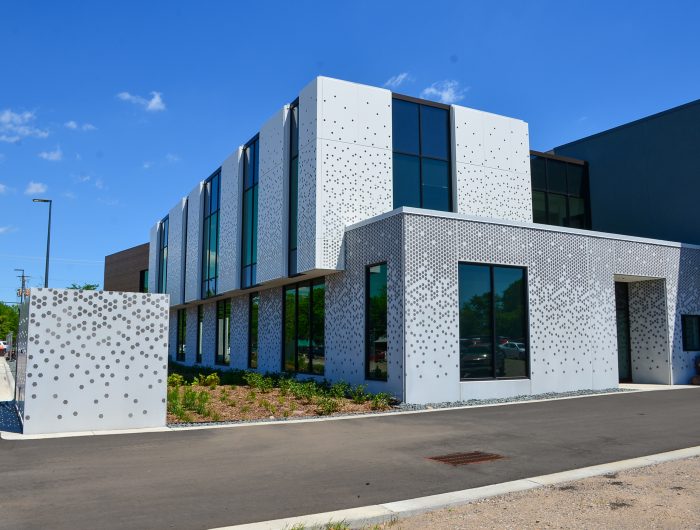This week’s edition covers stories from August 18th to August 24th, 2022.
Today’s issue is 950 words, a 7-minute read.
We’re talking about the Expansion of the International Institute of Minnesota and the expansion of language classes as a whole! We’re also discussing NIL deals in Minnesota High School Athletics. In BIPOC news, we’re telling you about disparities against BIPOC staff at The New York Times.
Local News:

The International Institute of Minnesota, a social services agency for immigrants and refugees, extends its resources as it completes its $13.2 million expansion. During Trump’s presidency, the government cut funding for organizations like the International Institute of Minnesota due to low refugee arrivals in the country. These cuts meant many agencies had to lay off staff, reduce resources, or shut down altogether. Under the Biden administration and with an influx of individual donations, the International Institute of Minnesota has renovated its offices and tripled its staff. As Minnesota has seen an increase in refugees from Afghanistan and Ukraine in the past year, it’s great to hear that the non-profit will continue to help those they serve to get on their feet and provide long-term services to those who need them.
As of June, Minnesota high school athletes have been allowed to sign name, image, and likeness (NIL) deals. This announcement comes a year after the National Collegiate Athletic Association (NCAA) declared that collegiate athletes had the same right. The local ruling means Minnesota high school athletes can get paid for their autographs, personal appearances, or promoting products. In the time of influencers, it may sound odd that this was not allowed. The argument was that these deals would move high school athletes out of the “amateur” category since they’re being “paid to play” when they’re not – they’re paid for the right to use their name or image. Since the guidance has passed, Minnesota coaches are still debating whether or not these deals will benefit students, families, teams, and high school programs at large.
BIPOC News:

Language classes become a central focus this summer as Minneapolis summer programs and the International Institute of Minnesota reopen in-person language classes. The number of “newly arrived Afghans” has increased in Minnesota since August 2021. COVID-19 restrictions at school have decreased, allowing children to return to in-person classes and activities. Translator and liaison, Muhammad Tayyeb, shared the stories about his eight children and the “more than 200 Afghan students who have enrolled in Minneapolis Public schools within the past year” with Sahan Journal and the Star Tribune. The students are eager to go back to class and continue learning English. Not only did the students learn how to use “idioms and colloquialisms”, but they also enjoyed weekly field trips that included Minneapolis landmarks, such as Fort Snelling, and were fueled with physical activity. Other benefits of the program included learning how to navigate public transit. State Director of Adult Education at the Minnesota Department of Education, Brad Hasskamp, explained the difficulties for immigrant parents accessing language courses while juggling everyday tasks, such as their “children’s education, food, money, and transportation.” Despite the decline in enrollment during the pandemic, the arrival of Afghan and Ukrainian immigrants has increased the demand for “hybrid classes for adult students”.
A recent union study shows performance evaluation disparity at The New York Times amongst Black and Latino staffers with their white peers. The NewsGuild union shared on Wednesday morning the data they gathered from 1,000 The New York Times employees who are union members. The report showed how “being Hispanic reduced the odds of receiving a high score by about 60%, and being Black cut the chances of high scores by nearly 50%.” As performance evaluations showed fluctuation for Black and Latino staff, they considered the “underlying system problem” to be “demoralizing.” The company seeks to double the number of people of color in their staff and in leadership roles by 2025. However, their performance evaluation system had “financial consequences” on the employees’ bonuses. Frances Robles, an investigative reporter for the Times, shared the discrepancies between the “warm assessment from her editor and tepid numerical ratings in 2018, 2019, and 2020.” Moving forward, The New York Times is committed to improving its performance evaluation system to be “fair and equitable,” said spokeswoman Danielle Rhoades Ha.
Bottom of the News:
A video made from NASA’s Webb telescope footage lets us travel 2,000 light years in 60 seconds. Through this breathtaking imaging, we zoom into the Southern Ring Nebula. Check it out!
About NewPrensa:

We’re Communications Specialists by day, and we’re so glad to talk with you every Thursday.
Do you enjoy reading NewPrensa?
Forward it to someone you think may enjoy it too!
Got suggestions, feedback, or a good scoop?
Send it to us at newprensa@newpublica.com.
If someone sent this newsletter your way, feel free to subscribe to get local and BIPOC news delivered to your inbox every Thursday morning.





